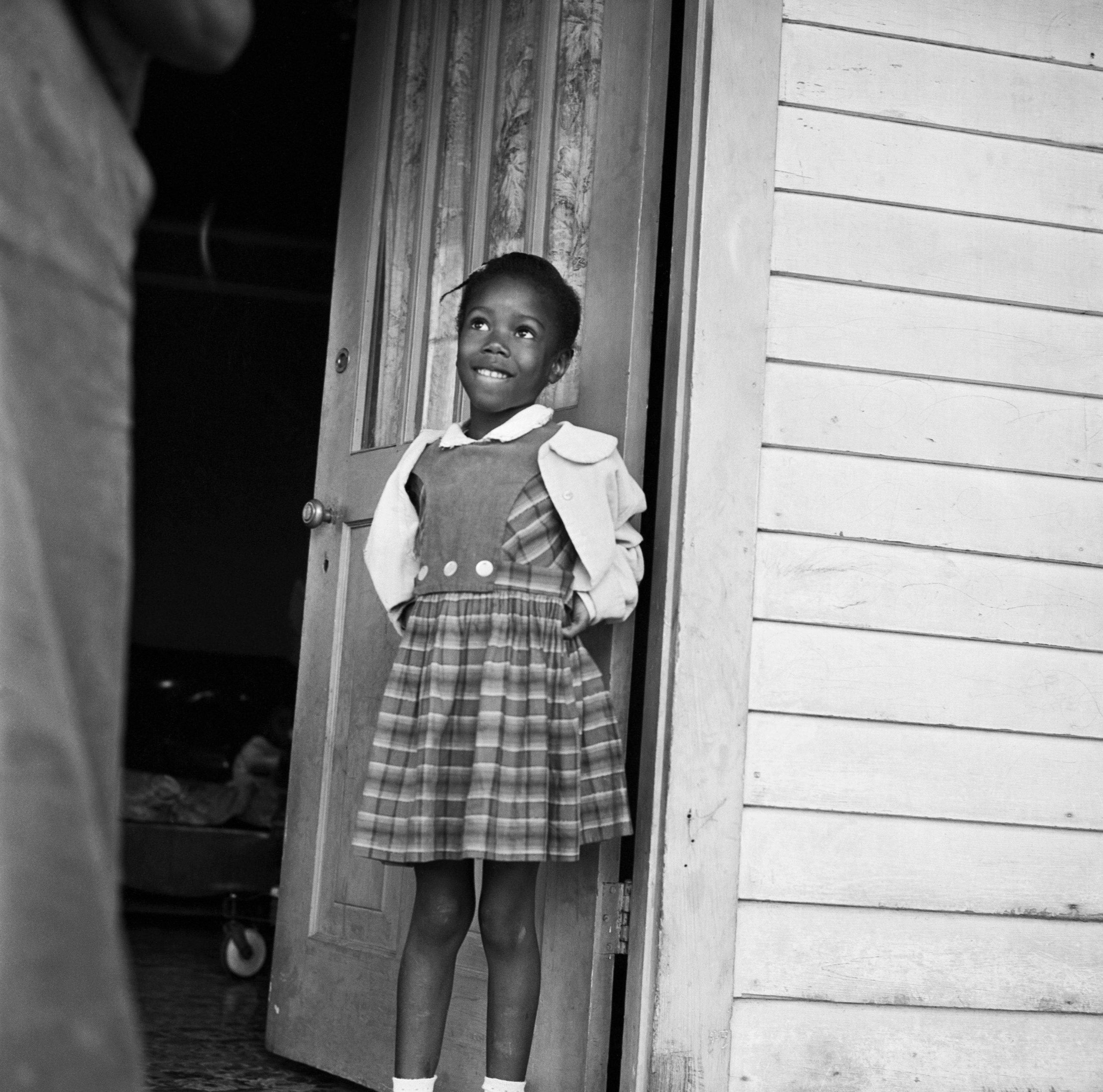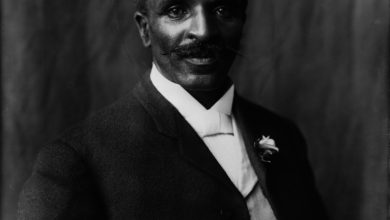Unsung Heroine: 10 Interesting Facts About Ruby Bridges You Didn’t Know

In the tapestry of American history, woven with stories of courage and the struggle for justice, the tale of Ruby Bridges stands out as a poignant chapter of a child’s impact on the civil rights movement.
More than just a participant, Ruby embodied the innocence and bravery that catalyzed a nation’s introspection on the deeply ingrained prejudices of its people.
At merely six years of age, Ruby Bridges crossed the threshold of William Frantz Elementary School in New Orleans, becoming the first African American student to integrate a white Southern elementary school.
This act was not just a step through a school door, but a giant leap forward in the quest for equality in the United States. Her story is etched in history, not only for the monumental court ruling it followed but for the enduring spirit of a young girl who faced unparalleled hostility with grace.
The role Ruby played in the civil rights movement as a child, bypassing angry mobs with a quiet dignity, serves as a powerful reminder of the impact one individual can have on the world.
This introduction seeks to unwrap the layers of Ruby’s legacy, offering insight into the lesser-known facets of her life and the profound influence she continues to exert on civil rights and education reform today.
1. Early Life of Ruby Bridges
Ruby Bridges was born on September 8, 1954, in Tylertown, Mississippi, at a time when the United States was deeply entrenched in the throes of racial segregation.
Her parents, Abon and Lucille Bridges, were sharecroppers, a common occupation for African Americans in the South during this era, which involved farming land owned by others in exchange for a share of the crops. In search of better opportunities, the Bridges family relocated to New Orleans, Louisiana, when Ruby was just four years old.
Despite the challenges posed by their socioeconomic status and the racially divided society they lived in, Ruby’s parents instilled in her a sense of courage and the importance of education from a young age.
This upbringing played a pivotal role in preparing Ruby for the historic endeavor she would undertake, embodying her family’s hopes for a future where she could access the same quality of education and opportunities irrespective of her skin color.
2. The Pivotal Test
In the landscape of Ruby Bridges’ profound journey towards desegregation, one of the most critical milestones was the pivotal test that carved her path into the annals of American history.
This examination, designed by the education board, was intentionally rigorous and complex, aimed at deterring African American children from gaining access to all-white schools.
Yet, Ruby, with her innate intellect and determination, surpassed the expectations of many by passing this test, making her one of the few African American students eligible to attend an all-white school.
This test not only determined Ruby’s educational trajectory but also marked a significant moment in the civil rights movement. It underscored the systemic barriers placed to segregate society and highlighted the extraordinary capabilities of young Ruby and others like her who were poised to challenge these injustices.
Ruby’s success in the test became a beacon of hope and a testament to the potential of overcoming deeply ingrained societal barriers through courage and resilience.
3. The First Day at William Frantz Elementary
Ruby Bridges’ first day at William Frantz Elementary School was a harrowing experience that underscored the intense racial prejudices of the time. On November 14, 1960, flanked by four federal marshals, six-year-old Ruby made her way through a screaming mob, a visceral manifestation of the opposition to desegregation.
The crowd, composed of angry white parents and bystanders, hurled insults and threats, showcasing a level of hostility that no child should ever have to face. Inside the school, the atmosphere was no less charged. Classrooms emptied as parents withdrew their children, refusing to allow them to be educated alongside an African American student.
Ruby, isolated and alone, spent her day in the principal’s office rather than in a classroom, as even the teachers were reluctant to teach a black child. This first day did not just test Ruby’s courage; it also exposed the deep-seated racial divides in American society.
Despite the solitary and intimidating start to her education at William Frantz Elementary, Ruby’s resilience became a symbol of hope and change, illustrating that the path towards desegregation would be tumultuous but not impossible.
4. An Escort by Federal Marshals
The necessity of Ruby Bridges being escorted to school daily by federal marshals underscores the turbulent and hostile climate of racial segregation in the United States during the early 1960s.
This poignant image of a young girl flanked by federal marshals not only symbolizes the physical dangers Ruby faced but also embodies the nation’s deeply entrenched resistance to desegregation.
It’s a stark reminder of the lengths to which the government had to go to enforce the Supreme Court’s Brown v. Board of Education decision, aiming to desegregate public schools.
The marshals’ presence was indispensable, ensuring Ruby’s safety from the vehement mobs and the palpable hatred that awaited her at the gates of William Frantz Elementary School each day.
Their steadfast accompaniment of Ruby serves as a powerful testament to the intense social upheaval of the era and underscores the courage and resilience required to confront and challenge systemic racism.
5. A Solo Classroom Experience
Ruby Bridges’ early days at William Frantz Elementary School were marked by a solitude that spoke volumes about the racial tensions of the time.
In what would come to be known as her “solo classroom experience,” Ruby found herself in the unprecedented position of being the only student in her class. This was not by choice but rather due to the fact that no other parents would allow their children to be in the same class as an African American child.
Under the careful guidance of Barbara Henry, a brave teacher from Boston who was the only one willing to teach her, Ruby’s classroom became a symbol of both isolation and resilience. Within those four walls, she received her education, undeterred by the hatred outside, showcasing an incredible strength of character.
This solo classroom experience is not just a reflection of Ruby’s courage but also a stark illustration of how deeply segregation was ingrained in society, where the mere presence of a young black girl in a classroom was enough to empty it.
Ruby’s time in this unique educational setting stands as a testament to how individual perseverance and bravery can challenge and change societal norms.
6. Ruby’s Teacher, Barbara Henry
Barbara Henry’s role in Ruby Bridges’ story is nothing short of heroic, embodying the very essence of courage and compassion. As the sole educator willing to teach Ruby, she not only crossed social boundaries but also dismissed personal risk to support her student.
In an era where segregation was the norm and racial tensions were high, Barbara’s decision to teach Ruby was a bold statement against the prevailing prejudices.
She created a nurturing and educational sanctuary for Ruby, ensuring that the classroom was a place of learning and growth, despite being physically isolated from the rest of the school.
Every day, Barbara Henry and Ruby Bridges sat in a classroom alone, not just teaching and learning in the traditional sense but also laying the groundwork for what education should look like — inclusive, equal, and undeterred by the chaos of society outside the classroom walls.
Barbara’s unwavering support for Ruby transcended the typical teacher-student relationship, becoming a profound example of how individual actions can contribute to social change.
7. Impact on the Bridges Family
The impact of Ruby Bridges’ attendance at an all-white school reverberated deeply within her own family, underpinning the personal cost of pioneering desegregation in America.
Ruby’s father lost his job, and her grandparents were evicted from the farm where they had lived and worked for years, actions driven by individuals who opposed the integration efforts that Ruby symbolized.
These economic hardships placed additional strain on the Bridges family, who were already navigating the treacherous waters of a divided society. Despite these adversities, the family’s support for Ruby never wavered, showcasing their collective resilience and belief in the fight for equality.
The challenges they faced underscore the often unseen sacrifices made by families who stand at the forefront of societal change.
Through these trials, the Bridges family emerged as a beacon of strength, demonstrating the profound impact that one child’s courage, backed by her family’s unwavering support, can have on breaking down the barriers of racial segregation.
8. Ruby’s Continued Activism
Ruby Bridges’ early experiences as a pioneering figure in the desegregation of American schools laid the groundwork for her lifelong commitment to activism and social justice.
In her later years, Ruby has used her platform to advocate for racial equality and educational reform, drawing upon her own experiences to inspire and educate others.
She established the Ruby Bridges Foundation, with the mission of promoting the values of tolerance, respect, and appreciation of all differences.
Through her foundation, Ruby conducts speaking engagements across the country, aiming to combat racism and prejudice by sharing her story and encouraging people to follow in her footsteps of resilience and resistance.
Her efforts extend into schools, where she engages with students, educators, and parents to foster environments that are inclusive and equitable.
Ruby’s continued activism not only commemorates her historic walk to school but also amplifies her voice in the ongoing fight against systemic racism, demonstrating that change, often sparked by the actions of a single individual, can ripple through generations.
9. The Ruby Bridges Foundation
The Ruby Bridges Foundation stands as a testament to Ruby Bridges’ enduring legacy and commitment to combat systemic racism through education and dialogue. Founded on the pillars of tolerance, respect, and the appreciation of differences, the foundation embodies Ruby’s lifelong dedication to fostering inclusive environments where diversity is celebrated.
At the heart of its mission lies the aim to eliminate racial disparities in schools and communities, promoting a society where every child can thrive irrespective of their racial background.
Through a range of initiatives, including educational programs, community engagement, and advocacy, the Ruby Bridges Foundation actively works towards building bridges of understanding and cooperation, reflecting Ruby’s belief in the power of education to break the chains of racism and prejudice.
This organization not only honors Ruby’s historic steps into William Frantz Elementary School but also continues her fight for a world where the content of one’s character truly is the measure of an individual, echoing the dream of Dr. Martin Luther King Jr. and the vision held by Ruby Bridges as a young, brave, and resilient child.
While we have made significant strides in the fight against racism and segregation since Ruby’s historic walk to school, there is still much work to be done. The legacy of Ruby Bridges serves as a reminder that progress requires individual bravery, resilience in the face of adversity, and collective action towards creating
10. Ruby’s Legacy and Honors
Ruby Bridges’ indelible mark on history has not only shaped her legacy as a beacon of change but also garnered her numerous honors that ensure her story continues to inspire future generations.
Notably, Ruby’s courageous walk to school, a pivotal moment in the Civil Rights Movement, has been immortalized in Norman Rockwell’s iconic painting “The Problem We All Live With.” This artwork not only captures the raw emotion and significance of Ruby’s solo march but serves as a powerful reminder of America’s segregation era, offering a poignant commentary on the fight for racial equality.
Beyond the art world, educational institutions have recognized Ruby’s monumental impact by naming schools in her honor. These schools stand as living testaments to her legacy, embodying her enduring commitment to equality and education.
The presence of Ruby Bridges’ name on educational campuses across the country signals a vow to uphold the principles she bravely fought for from a tender age. It ensures that the lessons of her life’s work resonate within the halls and classrooms, inspiring students to carry forward the torch of tolerance, respect, and unity.
Ruby’s legacy, symbolized through both cultural and educational spheres, magnifies the profound influence she continues to have on reinforcing the values necessary for societal progress.
Conclusion
In concluding, the enduring story of Ruby Bridges stands as a testament to the power of youth in sparking societal transformation. Far more than just a historical figure, Ruby embodies an unsung heroine whose courage, resilience, and dedication to equality illuminate the path toward a more inclusive and just society.
Her story transcends time, resonating with people across generations as a source of inspiration and a beacon of hope for continuous progress.
The ten interesting facts we’ve shared only scratch the surface of Ruby Bridges’ remarkable life and contributions. They reveal a depth of character and a commitment to change that challenges us all to play our part in combatting racism and promoting equality.
Ruby Bridges’ legacy reminds us that the fight for justice and equality is ongoing and that it often requires the kind of bravery and resilience Ruby displayed. Her story proves that age and size are no barriers to creating a significant impact, highlighting the role that each of us can play in fostering a more equitable world.
As we reflect on Ruby’s story, we are reminded of the importance of education, understanding, and tolerance in our collective pursuit of a society where everyone is accorded the dignity they deserve.
Ruby Bridges may have been a young girl when she walked into William Frantz Elementary School, but her footsteps echo loudly in the halls of history, urging us forward towards a future where equality and justice are realities for all.




